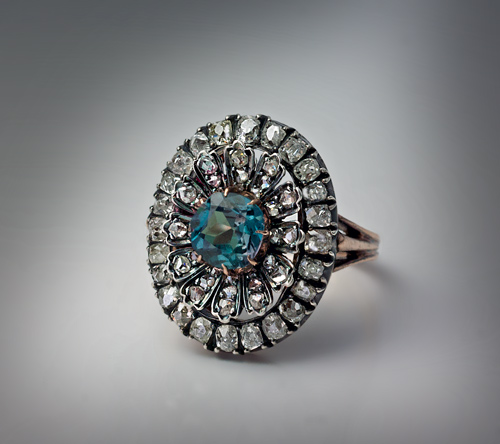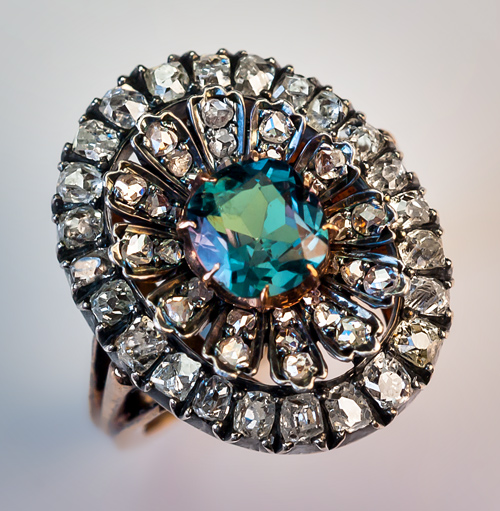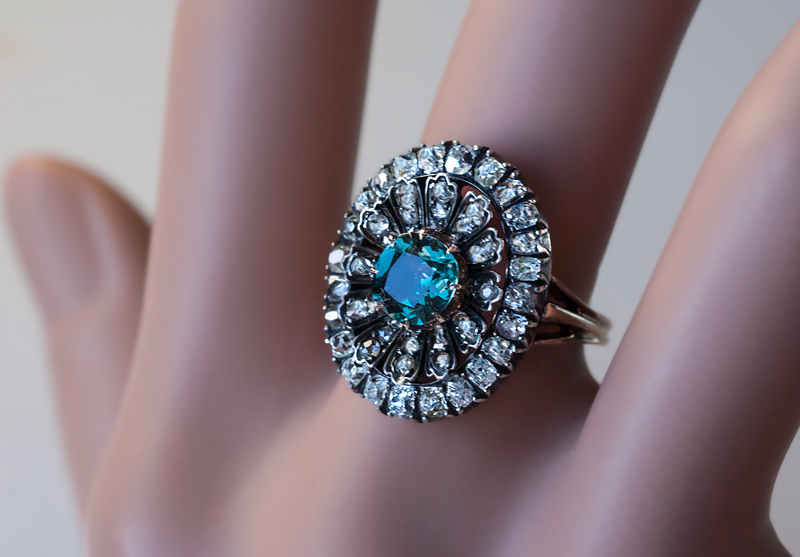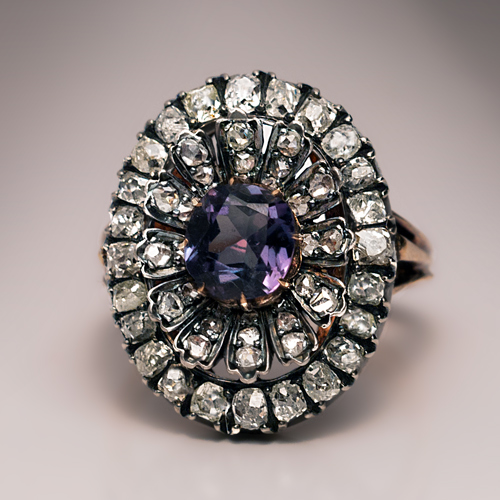A Very Rare Antique Russian Alexandrite and Diamond Cluster Ring
circa 1890
The silver topped 14K gold ring is centered with a very nice color-change alexandrite (0.90 ct), surrounded by rose-cut diamond petals within an oval shape frame embellished with 24 old cut diamonds. Depending on light conditions, the color of the alexandrite changes from a beautiful bluish-green to a superb reddish-purple.
The ring is marked with later Russian control marks for 585 gold (14K) and 925 silver.
Estimated total diamond weight 1.30 ct
Height 20 mm (13/16 in.)
Ring size 5 1/2 (16 mm)
The color-change variety of Chrysoberyl was first discovered on April 17, 1834 in Russia’s Ural Mountains by the Finnish mineralogist Nils Gustaf Nordenskiold of the St. Petersburg Science Academy. He was amazed that at night, under candle light, the stone changed its color from an emerald green to a reddish purple. He named the newly discovered stone Alexandrite, in honor of Tsarevich Alexander (later Tsar Alexander II, ruled 1855-1881), who was turning 16 on the day of the discovery.
Alexandrite was a very rare stone even in the 1800s. Russian 19th century novelist Nicholas Leskov writes the following about the alexandrite,
“The mines from which the best alexandrites were mined got flooded by a river therefore alexandrite can be rarely found among Russian jewelers,
as for foreign jewelers and gem cutters, they have only heard about it.”
Russia officially stopped mining alexandrites in 1995 due to the exhaustion of the mine.
The picture above was taken in daylight.
The stone changes its green color to purple in candle light.
The image above shows the color as an amethyst purple. In reality, the color is more pinkish-reddish-purple.
The stone has a great sparkle.





